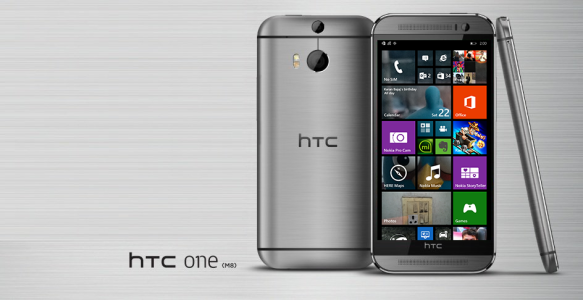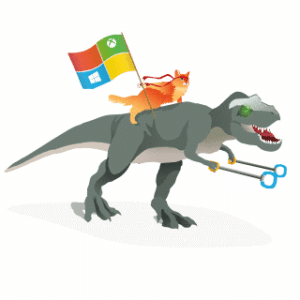Microsoft is in a unique place in the smartphone industry, It's a well known fact that every Android OEM out there is suffering financially, even the mighty Samsung didn't escape the heat, yet each day a new smartphone launches with premium specs at unbelievable prices, Lenovo's Zuk Z1 is a shining example, it's a premium midrange with a fingerprint sensor and top tier innards even by 2015 standards for less than 290$.
Yet sadly for Lenovo most of the money the Zuk Z1 will make is destined to benefit Google in various ways, even if the phone didn't have a single connection to the Play Store or didn't have access to Google's media content, most Android apps still uses Google Ads to make a profit.
The above entails that each Android OEM spends R&D, builds smartphones, markets them, bets on their success, suffer their losses, deals with aftermarket support and tries to keep up with Android hectic updates wasting endless resources on programmers and testers while Google reaps all the profits.
and if you didn't know this already that's why Android OEMs use bloat!
Microsoft answer to this situation was shortsighted, attract those wounded OEMS to the superior WP an effort that only got us wounded new entries that I don't remember any of them! I even forgot about the HTC M8 for Windows which in a way is the current Windows Phone flagship!

The problem with Microsoft's method that it doesn't offer a better solution, most buyers still want access to apps that aren't yet part of the Windows Phone ecosystem or they're just under developed in comparison to Android's version, not to mention that Microsoft services aren't that well received in the parts of the world where cheap smartphones are sold. (I would love to uninstall the built in Skype which takes precious ram from my Galaxy S6 since no one I know uses it here) so Microsoft's solution was to get Android APKs to work on Windows 10 mobile (stupid name btw) Now let me be clear: I'm all for that approach it saves developers the hassle of programming simple counter parts for their small apps, increasing the number of apps in the Windows Store exponentially while allowing developers to test the water and seeing if the user base justifies a native app development.

(I'm guessing Snapchat is the app that pushed them over the edge with that decision)
I already mentioned that Microsoft is in a unique place in the smartphone industry and I guess it's time to explain myself, Microsoft owns it's OS unlike all Android OEMs! and now it has access to millions of Android apps that can easily be tied to Microsoft's own Ad network, it also offers media content, and owns it's App store, why would you hand the design process to OEMs that will mess it up or muddy it up, when there're ODMs ready to fulfill your exact vision (See Nokia N1;Foxconn) why would you entice OEM's with money or discounts when a phone you designed will actively generate revenue and strengthen your relationship with your ODM!

What should MS do now?
It should finish developing Windows 10 mobile and focus on making the Android app experience the best it can be (do not repeat the Blackberry half assed experience).
Make Microsoft's ad revenue as enticing as it can be at least for a limited time within Windows 10 mobile launch.
Continue the strategy of availability everywhere while promoting Microsoft's services and contents.
Accessories are hard to come by in most places where Windows Phone is still popular, the new flagships should have their accessories in the box, SPECIALLY THE SURFACE PEN AND Micro USB to USB-C convertors(preferably a key chain friendly convertor)
Microsoft learned that marketing an ARM product as an 86X Windows machine will NOT work. Most reviewers will focus on explaining the difference instead of focusing on the actual phones and most retailers will be asked questions that may go over their heads.
Continuum should be marketed as a way to turn the phone into an Office machines and not a Windows Machine.
Microsoft should stop focusing on the US market, users around the world shouldn't be sad they don't live in the US to use built in apps, or interact with Cortana even if it was offered in English!
Microsoft asked too much for the Surface RT and ended up losing 900 millions with devices collecting dust, when you do the math that same amount they lost would've reduced the cost of the surface to 300$ for 4800000 Surfaces! and the conversation would've shifted to the affordability of an Office device that would've generated revenue via yearly Office subscriptions and accessories! instead of letting people feel scammed and eventually forgotten altogether.
Microsoft should sell the new flagships at a price that is not higher than 600$ for the 950XL and 500$ for the 950, and here's how that pricing makes sense, ever wondered why Google released the Nexus phones so cheaply? Simple if you want people to buy into the profitable high end business you let them taste the product, hook them in, and then jack up the prices! sounds familiar? it should because that's what happened!
That pricing will lead old Lumia users to upgrade easily since all of us were waiting eagerly to do so, it'll also create a buzz around the product, a buzz that will ripple across the inventory Microsoft already has of Windows 10 mobile ready phones, and you'll see people who can't afford that price point venturing into (Lumia 430 435, 532, 535, 540, 640, 640 XL, 735, 830, 930) all are Windows 10 mobile ready devices with APK support that have decent battery life and incredible ram management.
It's fair to say that no one likes Microsoft's ads specially the TV ones they never managed to hype anything and I think if Microsoft focused solely on social media it would do a better job than the OnePlus and will save the tons of money required for traditional marketing which will make meeting the price points I mentioned A LOT easier.
Do you agree with what I said? help me get this message to Windows Central front page and also to Microsoft key employees over twitter like @joebelfiore.
Yet sadly for Lenovo most of the money the Zuk Z1 will make is destined to benefit Google in various ways, even if the phone didn't have a single connection to the Play Store or didn't have access to Google's media content, most Android apps still uses Google Ads to make a profit.
manufacturers like LG, with its well-received G3 and G4 family, tend to make around 1 cent per phone in net profit.
The above entails that each Android OEM spends R&D, builds smartphones, markets them, bets on their success, suffer their losses, deals with aftermarket support and tries to keep up with Android hectic updates wasting endless resources on programmers and testers while Google reaps all the profits.
and if you didn't know this already that's why Android OEMs use bloat!
Microsoft answer to this situation was shortsighted, attract those wounded OEMS to the superior WP an effort that only got us wounded new entries that I don't remember any of them! I even forgot about the HTC M8 for Windows which in a way is the current Windows Phone flagship!

The problem with Microsoft's method that it doesn't offer a better solution, most buyers still want access to apps that aren't yet part of the Windows Phone ecosystem or they're just under developed in comparison to Android's version, not to mention that Microsoft services aren't that well received in the parts of the world where cheap smartphones are sold. (I would love to uninstall the built in Skype which takes precious ram from my Galaxy S6 since no one I know uses it here) so Microsoft's solution was to get Android APKs to work on Windows 10 mobile (stupid name btw) Now let me be clear: I'm all for that approach it saves developers the hassle of programming simple counter parts for their small apps, increasing the number of apps in the Windows Store exponentially while allowing developers to test the water and seeing if the user base justifies a native app development.

(I'm guessing Snapchat is the app that pushed them over the edge with that decision)
I already mentioned that Microsoft is in a unique place in the smartphone industry and I guess it's time to explain myself, Microsoft owns it's OS unlike all Android OEMs! and now it has access to millions of Android apps that can easily be tied to Microsoft's own Ad network, it also offers media content, and owns it's App store, why would you hand the design process to OEMs that will mess it up or muddy it up, when there're ODMs ready to fulfill your exact vision (See Nokia N1;Foxconn) why would you entice OEM's with money or discounts when a phone you designed will actively generate revenue and strengthen your relationship with your ODM!

What should MS do now?
It should finish developing Windows 10 mobile and focus on making the Android app experience the best it can be (do not repeat the Blackberry half assed experience).
Make Microsoft's ad revenue as enticing as it can be at least for a limited time within Windows 10 mobile launch.
Continue the strategy of availability everywhere while promoting Microsoft's services and contents.
Accessories are hard to come by in most places where Windows Phone is still popular, the new flagships should have their accessories in the box, SPECIALLY THE SURFACE PEN AND Micro USB to USB-C convertors(preferably a key chain friendly convertor)
Microsoft learned that marketing an ARM product as an 86X Windows machine will NOT work. Most reviewers will focus on explaining the difference instead of focusing on the actual phones and most retailers will be asked questions that may go over their heads.
Continuum should be marketed as a way to turn the phone into an Office machines and not a Windows Machine.
Microsoft should stop focusing on the US market, users around the world shouldn't be sad they don't live in the US to use built in apps, or interact with Cortana even if it was offered in English!
Microsoft asked too much for the Surface RT and ended up losing 900 millions with devices collecting dust, when you do the math that same amount they lost would've reduced the cost of the surface to 300$ for 4800000 Surfaces! and the conversation would've shifted to the affordability of an Office device that would've generated revenue via yearly Office subscriptions and accessories! instead of letting people feel scammed and eventually forgotten altogether.
Microsoft should sell the new flagships at a price that is not higher than 600$ for the 950XL and 500$ for the 950, and here's how that pricing makes sense, ever wondered why Google released the Nexus phones so cheaply? Simple if you want people to buy into the profitable high end business you let them taste the product, hook them in, and then jack up the prices! sounds familiar? it should because that's what happened!
That pricing will lead old Lumia users to upgrade easily since all of us were waiting eagerly to do so, it'll also create a buzz around the product, a buzz that will ripple across the inventory Microsoft already has of Windows 10 mobile ready phones, and you'll see people who can't afford that price point venturing into (Lumia 430 435, 532, 535, 540, 640, 640 XL, 735, 830, 930) all are Windows 10 mobile ready devices with APK support that have decent battery life and incredible ram management.
It's fair to say that no one likes Microsoft's ads specially the TV ones they never managed to hype anything and I think if Microsoft focused solely on social media it would do a better job than the OnePlus and will save the tons of money required for traditional marketing which will make meeting the price points I mentioned A LOT easier.
Do you agree with what I said? help me get this message to Windows Central front page and also to Microsoft key employees over twitter like @joebelfiore.
Last edited:


